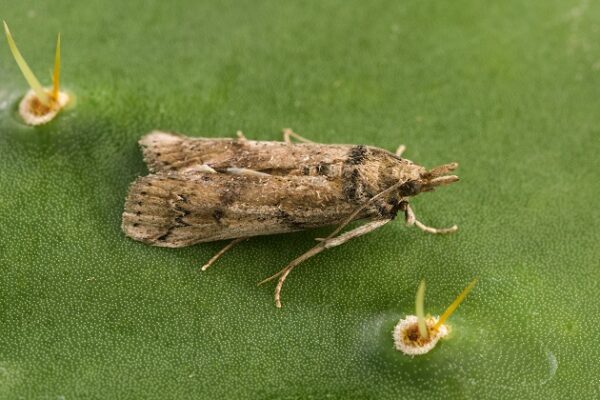AUSTIN, Texas — The cactus moth has a wingspan of only about an inch, but this invasive insect has the potential to cause largescale agricultural and ecological devastation in Texas, according to the first study of cactus moths in Texas.
Researchers at The University of Texas at Austin’s Invasive Species Project based at Brackenridge Field Laboratory in Austin have found that four native species of prickly pear cactus — and the species that rely on them — face a serious health threat from the moth.
“Cactus is a hugely important part of the landscape,” said Colin Morrison, a graduate student researcher at UT Austin. “Many different animals depend on cactus for food and habitat in Texas, Mexico and across the southwestern United States. It’s also an agricultural staple for millions of people.”
The study, published this week in the journal Ecological Entomology, looked at characteristics of four native prickly pear species, including one that is harvested for nopales, the prepared pads of the cactus that are used in Latin American cuisine. Experiments showed that the cactus moth will eat all four types of prickly pear and that there were negligible differences in nutritional value across the species.
Additionally, built-in chemical and physical defenses of the cactus proved to be no match for the moth.
“We looked at how tough the cacti are and how nutritious the cacti are,” Morrison said. “The invasive cactus moth is highly likely to be able to perform, survive and grow very well on all of these species. This is alarming to us because it’s pretty much pure cactus land in all directions.”
The cactus moth island-hopped from the Caribbean to Florida about 30 years ago. After it started to spread toward Texas, UT Austin’s invasive species research team began preparing for its arrival by studying its natural enemies with collaborator Patricia Folgarait in Argentina. That work was recently published in Florida Entomologist. They think the moth appeared in Texas in late 2017, when infestations appeared along the Texas Gulf Coast. One goal of the research was to better understand the likelihood of the moth continuing to expand its range throughout the state and into Mexico.
“If nothing is done, these moths will continue to expand, and after a certain point it will be impossible to stop them,” Morrison said.
It is believed that there are no natural predators in Texas that will control the cactus moth. Scientists with the U.S. Department of Agriculture have studied the use of parasitic wasps from South America that prey on cactus moths as a way to control cactus moth populations. However, the moth infestation degraded Florida’s cactus populations before sufficient research had allowed permits for field trials of the wasp.
Robert Plowes, Nathan Jones, Lawrence Gilbert and Colin Morrison all contributed to the research. Funding support was provided by the Lee and Ramona Bass Foundation, the Texas Ecolabs program and a UT System-CONACYT ConTex grant.




